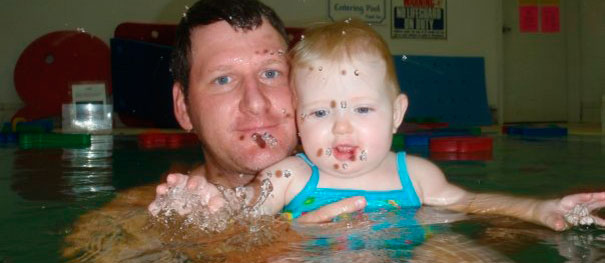
It’s May and that means that events are being celebrated to educate communities about water safety and drowning prevention. There are well-documented and publicized steps that everyone can follow to keep swimmers safe around the water – pools, lakes and beaches or bathtubs. This especially applies to children and the statistics we share below will show you why.
Before we share the steps to water safety, we’d like to make sure that you know some critical statistics that may make the importance of following these steps crystal clear.
Some of these statistics may shock you – but it is important information for parents.
- There was an annual average of 3,533 fatal unintentional drownings in the US from 2005-2009. This means that there are about ten deaths per day.
- About one in five people who die from drowning are children who are ages 14 and younger.
- Drowning is the leading cause of injury death to children ages 1-4 and the second leading cause of injury death for children ages 1 to 14.
- Thousands of children are hospitalized each year for non-fatal drowning incidents. Many sustain life-long, profound, permanent brain damage.
- A child can drown in as little as one inch of water, in as little time as 20 seconds.
- Most drownings occur in May, June, July, and August.
Protecting children has to be a priority for every community. Preventing these tragedies is not out of our control. It is a fact that these tragedies are preventable.
But before we get to the steps to follow to ensure water safety, let’s cover a couple of critical parental responsibilities that must take place around water:
Constant Supervision. This is the real key to keeping kids safe around water. And that means watching children around any water environment whether it be a pool, a lake, a bathtub, a toilet, or simply a bucket of water. It really doesn’t matter what skills your child has acquired and it really doesn’t matter how shallow the water.
Within Reach. Drowning only takes a few seconds. It is a quick and quiet killer and therefore it is imperative for supervising adults to be close enough to reach children at all times (especially with younger children.) Adults should not allow themselves to be distracted while supervising children in or around water. And they shouldn’t think that they can peruse Facebook or go through their email while doing a good job supervising children in and around water.
We noted steps that every person (and especially parents) can follow to ensure better water safety for children. It’s easy to remember these because stringing together the first letter of each step spells WATER! So what are they?
Wear your life jacket. One of the easiest ways to increase safety in the water is to wear a life jacket. There are life jackets that fit all sizes and preferences, so there’s no excuse for not wearing one. Children should wear child-sized life jackets – not adult ones. Adult jackets just don’t fit them properly. Flotation devices and inflatable toys are NOT replacements for life jackets or parental supervision.
Act. Throw! Don’t go. If your kids don’t know what to do when they see someone having a swimming emergency, you need to teach them. While first instinct for anyone is to run toward the person in trouble. That isn’t the best way to help them. First ACT! Do this by THROWING a life preserver to the person in trouble. Do NOT GO. This prevents the potential of a second person putting themselves in jeopardy and gives that person the ability to truly help the swimmer in trouble.
Take swimming lessons. Knowing how to swim provides so many benefits to kids. It is also an extremely valuable life skill because it teaches kids how to take care of themselves should they accidentally end up in trouble in the water. It is also important that parents know how to swim so that they are not helpless and can take care of themselves when they are around the water.
Educate, learn swim safety skills. Swimming is fun, for sure, but it is important that kids learn how to be safe in and around the pool. It is important that kids learn basic water safety skills and get regular swim instruction by highly-trained instructors that following a proven curriculum especially focus on the things every child should know how to do in the water so that kids remain safe while they are having fun.
Respect, play it cool and follow the rules. Every pool has rules and for good reason. These rules include very familiar ones: Walk, don’t run around the pool; Make sure an adult is watching; No horseplay. If kids and adults follow pool rules, everyone can have fun AND be safe.


Conversations